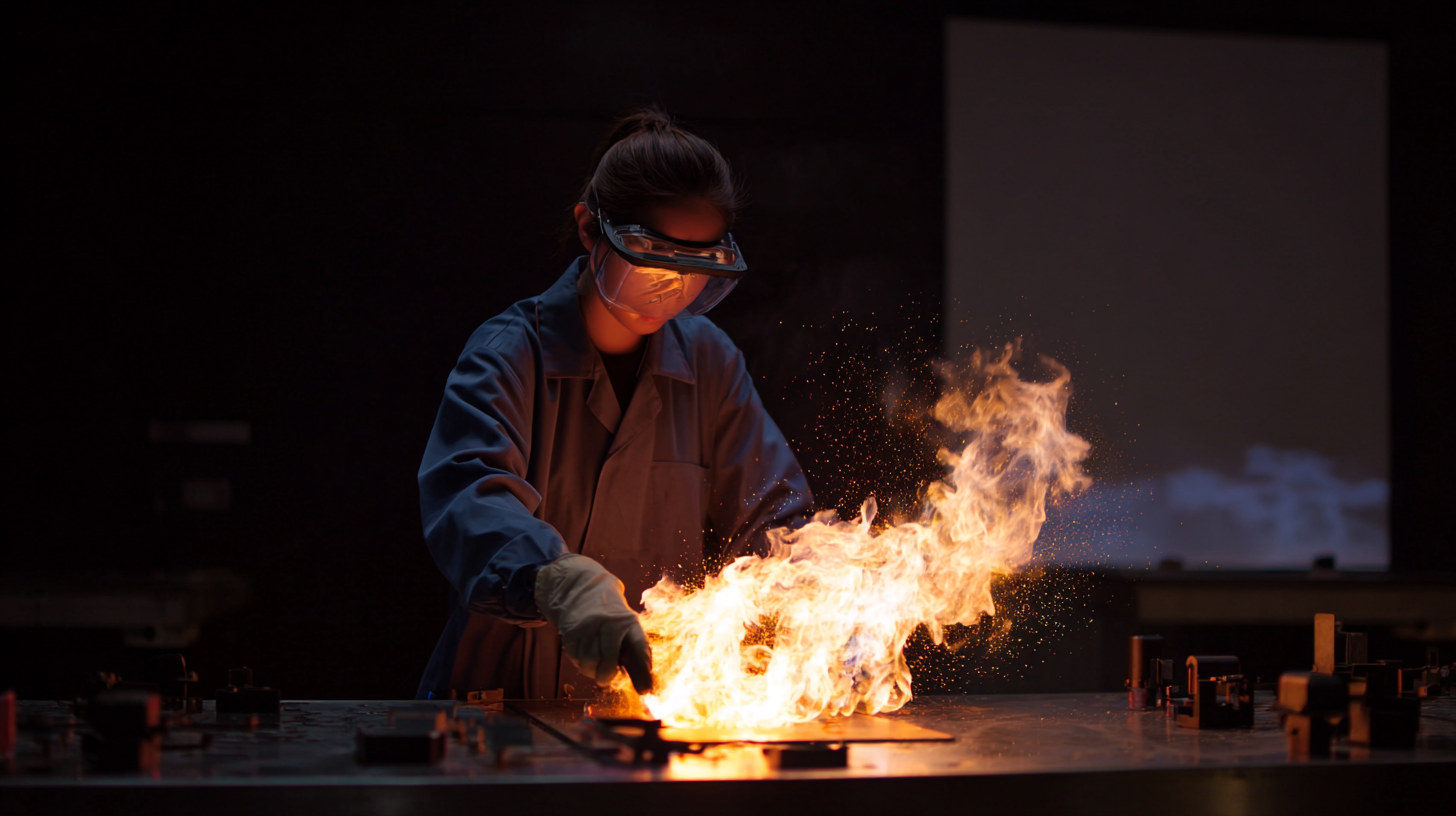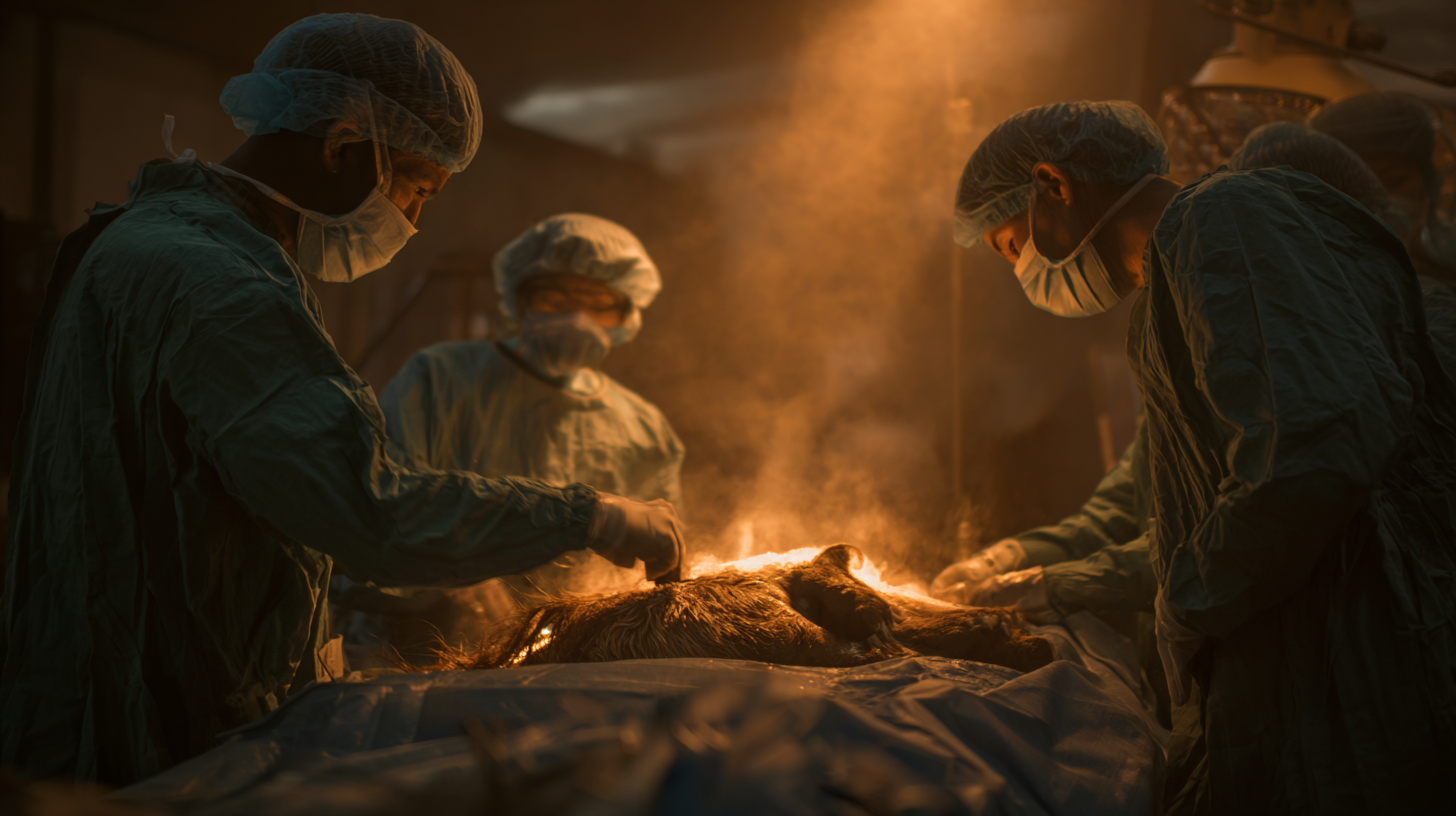Exploring Global Applications of Best Burn Treatment and How to Effectively Implement Them
In recent years, advancements in burn treatment have garnered global attention, highlighting innovative practices and technologies that enhance patient care. This blog seeks to explore the leading applications of burn treatment worldwide while focusing on the pivotal role of Chinese manufacturing capabilities that drive these advancements. As China positions itself at the forefront of medical technology, the integration of state-of-the-art products and solutions in burn treatment not only exemplifies the nation's manufacturing prowess but also sets new standards in the healthcare sector.

From cutting-edge dressings to advanced wound care protocols, we will delve into how these effective implementations can transform recovery outcomes for burn victims around the globe. By examining these best practices, we aim to foster a deeper understanding of the importance of continuous innovation in burn treatment and its impact on global health.
Exploring the Latest Advances in Burn Treatment Across Different Countries
As advancements in medical technology continue to evolve, burn treatment practices vary significantly across the globe. For instance, according to a recent report by the World Health Organization, approximately 180,000 fatalities each year are attributed to burn injuries, with the majority occurring in low- and middle-income countries where access to advanced medical care is limited. In these regions, traditional methods like honey dressings and aloe vera applications are commonly used due to their accessibility and affordability, showcasing an innovative yet resource-constrained approach to healing.
In contrast, high-income countries have seen remarkable progress with the advent of advanced treatments such as bioengineered skin substitutes and hyperbaric oxygen therapy. A study published in the Journal of Burn Care & Research highlights that the use of these modern techniques has significantly reduced healing times, improving outcomes for patients with severe burn injuries. For example, facilities employing bioengineered grafts report healing rates exceeding 85% in deep partial-thickness burns, underscoring the importance of adopting cutting-edge innovations. By sharing knowledge and best practices internationally, countries can implement effective burn treatment strategies tailored to their specific healthcare environments and patient needs.
Global Applications of Burn Treatment Advancements
Comparative Analysis of Burn Treatment Protocols: Global Perspectives
Burn treatment protocols vary significantly across different countries, shaped by cultural practices, healthcare infrastructure, and access to medical resources. For instance, in developed nations, advanced technologies such as bioengineered skin grafts and specialized burn units are more prevalent. These facilities often follow standardized, evidence-based protocols that emphasize quick assessment and intervention to minimize complications. By contrast, many developing countries still rely on traditional remedies and basic treatment methods, which can lead to higher rates of infection and scarring due to limited resources and access to specialized care.
A comparative analysis reveals that the most effective burn treatment protocols incorporate both modern medical practices and traditional care methods. Countries that successfully blend these approaches often see improved patient outcomes. For example, a combination of antiseptics used in conjunction with aloe vera and other natural remedies can enhance healing while preventing infection. Additionally, training healthcare providers in both contemporary techniques and culturally accepted methods can bridge the gap in care and ensure that burn victims receive comprehensive support tailored to their needs. This integration of global perspectives on burn treatment not only fosters innovation but also promotes a deeper understanding of how diverse practices can jointly enhance patient care.
Cost-Effectiveness of Burn Treatment aftercare Services in Different Healthcare Systems
The cost-effectiveness of burn treatment aftercare services varies significantly across different healthcare systems, reflecting the disparity in resources and patient outcomes. In many high-income countries, advanced technologies and specialist services greatly enhance recovery rates, ultimately leading to reduced long-term costs associated with disability and rehabilitation. However, the initial investment in these systems can be substantial, prompting discussions around the necessity of efficient fund allocation and preventive strategies that might alleviate the burden on healthcare systems.
In contrast, low- and middle-income countries often struggle with limited resources, which can hinder the delivery of optimal burn treatment aftercare. This limitation not only affects immediate care but also extends recovery times and increases the likelihood of complications, translating to higher overall costs in the long run. As such, fostering partnerships between affluent and developing nations could facilitate knowledge transfer and resource sharing, allowing for innovative, cost-effective solutions tailored to local contexts. Ultimately, prioritizing burn treatment aftercare as a critical component of public health will benefit healthcare systems globally, reducing economic strain and improving patient outcomes.

Understanding Patient Education: Implementing Best Practices in Burn Care
Effective patient education is a crucial element in the management of burn care, as it empowers individuals to understand their condition and participate in their recovery. To implement best practices, healthcare providers must tailor their educational approaches to accommodate various learning styles and cultural backgrounds. This includes using simple language, visual aids, and hands-on demonstrations to explain treatment procedures, aftercare, and pain management strategies. Engaging patients in discussions about their recovery process can foster trust and improve adherence to treatment recommendations.
Moreover, continuous support and follow-up are essential in maintaining the effectiveness of patient education. Healthcare professionals should encourage patients and their families to ask questions, express concerns, and share challenges they may face during recovery. Utilizing technology, such as mobile apps or online resources, can further enhance education by providing easy access to information and support networks. By prioritizing patient education and integrating these strategies into burn care practices, healthcare providers can significantly improve outcomes and enhance the overall quality of life for burn survivors.
Navigating Challenges: Ensuring Access to Optimal Burn Treatments Worldwide
 Access to optimal burn treatments remains a challenge, particularly in low-resource settings. To navigate these challenges effectively, stakeholders must prioritize
education and training for healthcare providers.
Implementing regular workshops and training sessions can empower local practitioners with the latest techniques and knowledge about burn care. This ensures they are well-equipped to handle burn injuries with the best practices available.
Access to optimal burn treatments remains a challenge, particularly in low-resource settings. To navigate these challenges effectively, stakeholders must prioritize
education and training for healthcare providers.
Implementing regular workshops and training sessions can empower local practitioners with the latest techniques and knowledge about burn care. This ensures they are well-equipped to handle burn injuries with the best practices available.
Tip:
Collaborate with local organizations to create sustainable training programs that can be integrated into existing healthcare systems. This fosters a community approach to burn treatment and raises awareness of the importance of immediate and appropriate care.
Additionally, increasing the availability of essential burn care supplies is crucial for effective treatment. Establishing supply chains that ensure a steady flow of medical supplies and equipment can greatly improve patient outcomes.
Tip:
Advocate for partnerships with international organizations to facilitate donations of burn care products and establish logistics for distribution, particularly in remote areas. This not only aids in immediate care but also helps build a more resilient healthcare infrastructure.
